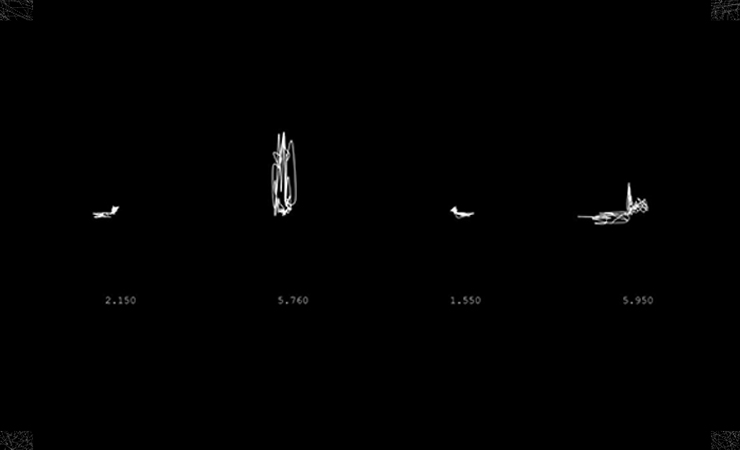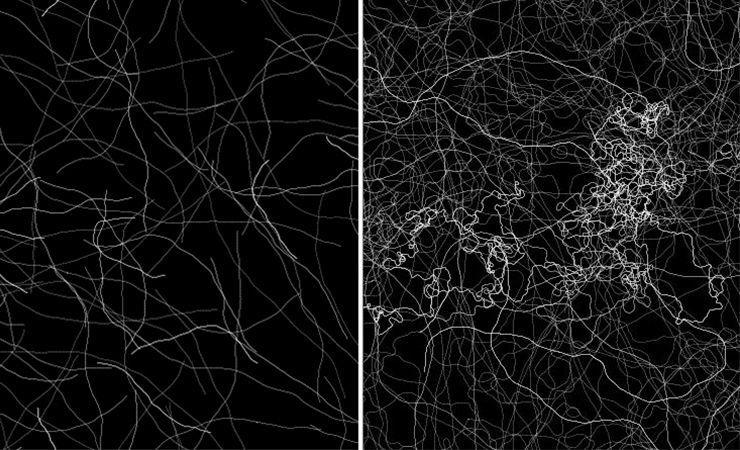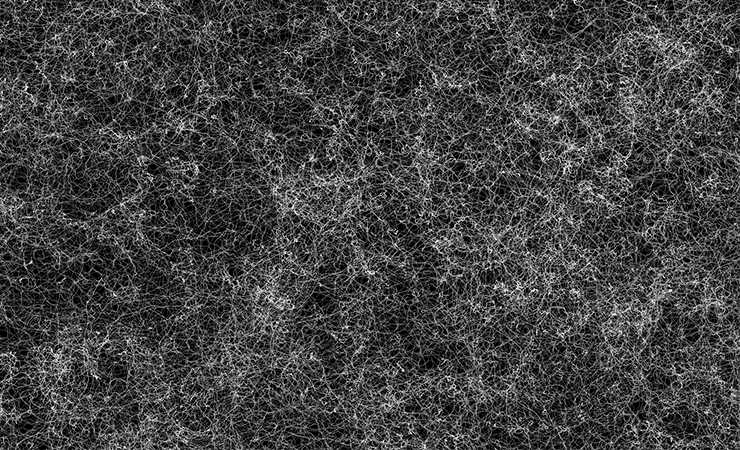The Scribble
Translating Light Data_01
produced by: Gerolamo Gnecchi Ruscone
When you search on the dictionary the word "scribble" it tends to be defined as a stroke that is created "carelessly or hurriedly". Despite this negative connotation, the scribble could also reveal a mental picture where a person assigns unconventional parameters that take control of the drawing. Furthermore, the art of scribbling is not something new. From surrealists such as André Masson to the master Cy Twombly, Pollock artists have developed different techniques, lifetime works, to generate scribble drawings, resulting in sophisticated, expressive, and unpredictable artworks.
Intrigued by its unpredictability and in ways to simulate this process on the computer, I based most of my research for this module on generating scribbles. One of the first assignments was to create a computational brush. The brush was simple; it created a continuous curve where it varied by the way I used a digital pen. It was the first time where I felt that “happy moment”, that feeling of surprise, that Anton Ehrenzweig wrote about in “The Hidden Order of Art,” by generating a drawing on the computer.
Week 02 assignment_ computational brush
The research continued, and I started applying other parameters, such as sound, data, mathematical equations, and so on to generate scribbles.
From left to right :
1| Week 04 assignment_ scribble knots 2| Week 05 assignment_ sound generative scribbles 3| Week 06 assignment_translating Thames tide data to scribbles
My final project is a first attempt to translate light data into a scribble using Arduino and Processing. The program responds to real-time changing conditions of the light intensity in a room resulting in new scribble landscapes. The code is composed of three elements:
1| An autonomous scribble: A class that applies steering behaviors to the scribble making them autonomous.
2| An LDR sensor: The path and the speed of the scribble will depend on the intensity of the light. The higher the intensity the more randomness it creates.
3| Time: The drawing restarts at specific times, in this case, every 10 minutes. We could eventually think to leave the program on and see how the drawing changes during different moments of the day.
Final Project_1. left image-normal light intensity 2.right image-higher light intensity that creates more random paths and slowers the speed of the scribbles
Final Project_10 minute sequence
References
CODE Daniel Shiffman tutorials on Autonomous Agents: http://natureofcode.com




































































